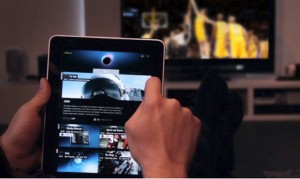The Future of User Experience
 The average consumer is changing; there is no denying this. People today are unable to simply sit back and enjoy a single form of stimulation. Instead, they need consistent, multiple means of entertainment. They watch TV, browse the internet, check Facebook, send text messages, and watch YouTube videos on their tablets, simultaneously.
The average consumer is changing; there is no denying this. People today are unable to simply sit back and enjoy a single form of stimulation. Instead, they need consistent, multiple means of entertainment. They watch TV, browse the internet, check Facebook, send text messages, and watch YouTube videos on their tablets, simultaneously.
These patterns are already changing the way consumers live their daily lives and how they spend their money. Let’s look at sports, as an example. Today’s consumer doesn’t want to shell out $60 for crappy seats to a sporting event, then pay for parking, greasy food, and over-priced beer when they can watch the game on a big-screen, high definition TV for free while surfing the web and flipping between other programs during the commercials. People would rather give up the “I was there” moment for the flexibility to multi-task.
So how does this affect advertisers and brands trying to reach those audiences? Well, they have to adjust how they intend to market to those individuals.
In the sports example, most small-market teams are unable to attract enough fans to maintain costs, besides the NFL, which is a goldmine. So they have had to reinvent how they market. Many teams receive lucrative cable deals that more than make up for lost revenue from tickets. Special promotions, like bobble heads, drive fans to the ballpark. And the wave of the future appears to be stadiums with internet capabilities, so fans can still use their tablets while blowing loads of cash on concessions.
How does this relate to your business?
The sports example shows some of the inventive ways that NHL, NBA, MLS, and MLB franchises have tried to stay connected to their target audiences via multimedia and getting ahead of the curve. And you can do the same thing.
Having the ability to access information from a tablet and smartphone is becoming crucial to a business’ success. The iPad was released just two years ago and the iPhone five years ago, creating a consumer necessity to own tablets and smart phones. Since then, companies have had to keep these items in mind when advertising. While most internet marketing services are available on the internet, creating apps that specifically work on tablets and smart phones keep consumers in the loop wherever they are. Whether it is a game or an easier way to shop, companies with apps tend to be favored by this generation of multi-taskers for their easy access.
But apps have more, well, applications than that. They make consumers feel like the company has designed something specifically for them and their busy lives. For example, the user-experience of shopping for car insurance while at the super market buying groceries makes the customer appreciate the convenience that the insurer provides.
The Future
So what does the future hold for user experience? The ability to market with new technology coupled with ease of use will continue to drive sales heading forward. Staying ahead of the curve and maintaining a close-knit relationship with customers via social media will be crucial to keeping current clients and expanding sales. Because in the end, customers want to believe you have their best interests at heart.
Follow Trimark on Twitter @trimarkgroup for more updates about technology and marketing, like this blog about trademark infringement.
